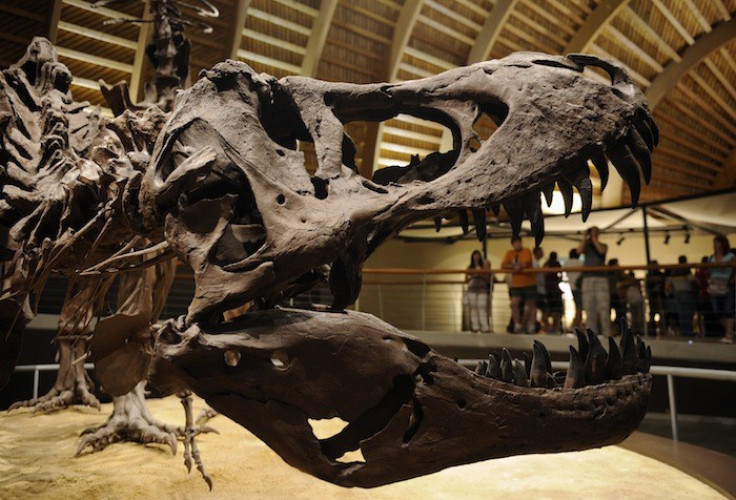Fighting T Rex and Triceratops Fossils Could Fetch £6.4m at Auction

The fossilised remains of a Tyrannosaurus Rex and a Triceratops have been unearthed, still locked together in a deadly embrace that has lasted 68 million years.
The dinosaurs appear to have fought to the death, and some of the T rex's fangs are still embedded in the Triceratops' skull.
The 8ft skeletons were buried by an earthquake and remained there undisturbed until a rancher in Montana found them in 2006.
The two skeletons of the long-extinct giant reptiles are so perfectly preserved that some of the bones are still covered in what appears to be soft tissue.
A horrific battle to the death was waged between the two dinosaurs and experts believe that the skull and chest of the T rex was crushed by a powerful blow from the Triceratops.
Experts have identified them as Nanotyrannus lancensis, a smaller relative of the T rex, and Chasmosaurine ceratopsian from the Triceratops family.
"Had they been found apart, each of these fossils would have been one of the most complete skeletons ever found. But what makes the story even more amazing is that these dinosaurs were clearly locked in a bitter fight to the death that killed both of them," Thomas Lindgren, of Bonhams' natural history department told the Times.
Lindgren hopes the fossils are bought by a museum so they can go on public display. "These dinosaurs represent one of the most significant fossil finds of all time."
They are one of the most complete skeletons ever found and could fetch a record £6.4m at a November Bonhams auction in New York.
The previous record was for a T rex, given the nickname Sue, which sold for £5.4m in 1997.
Other evidence of the T rex's savagery is well documented. A fossil tooth found buried inside the healed tailbones of a duckbill dinosaur suggests the animal survived a close encounter with a T rex.
Scientists say the embedded tooth, discovered in the Hell Creek Formation, Montana, is the first conclusive proof that T rex was a predator that hunted and killed prey.
"It's not just a smoking gun - we've actually found the bullet," said study co-author Peter Larson, a paleontologist at the Black Hills Institute of Geological Research in South Dakota.
© Copyright IBTimes 2024. All rights reserved.






